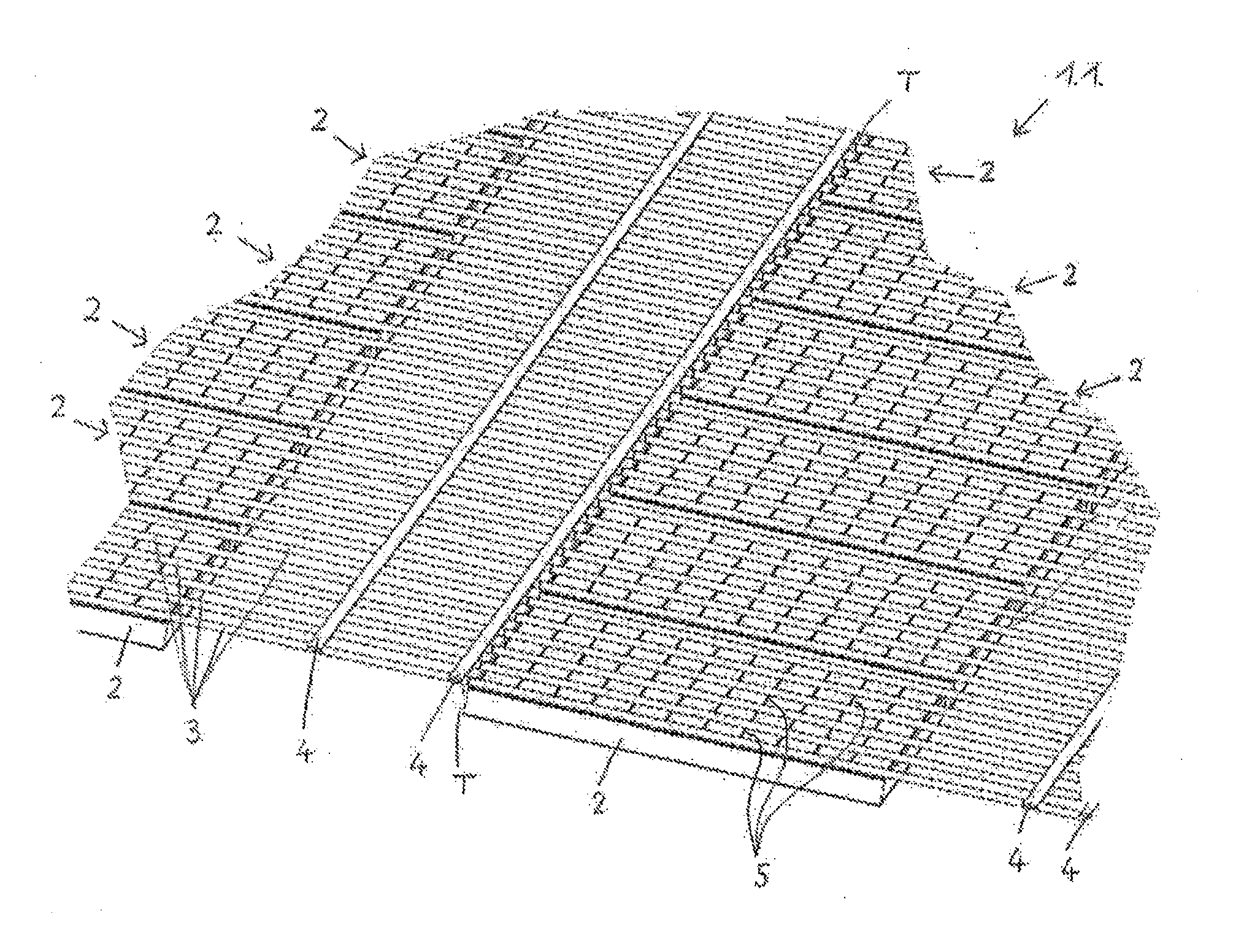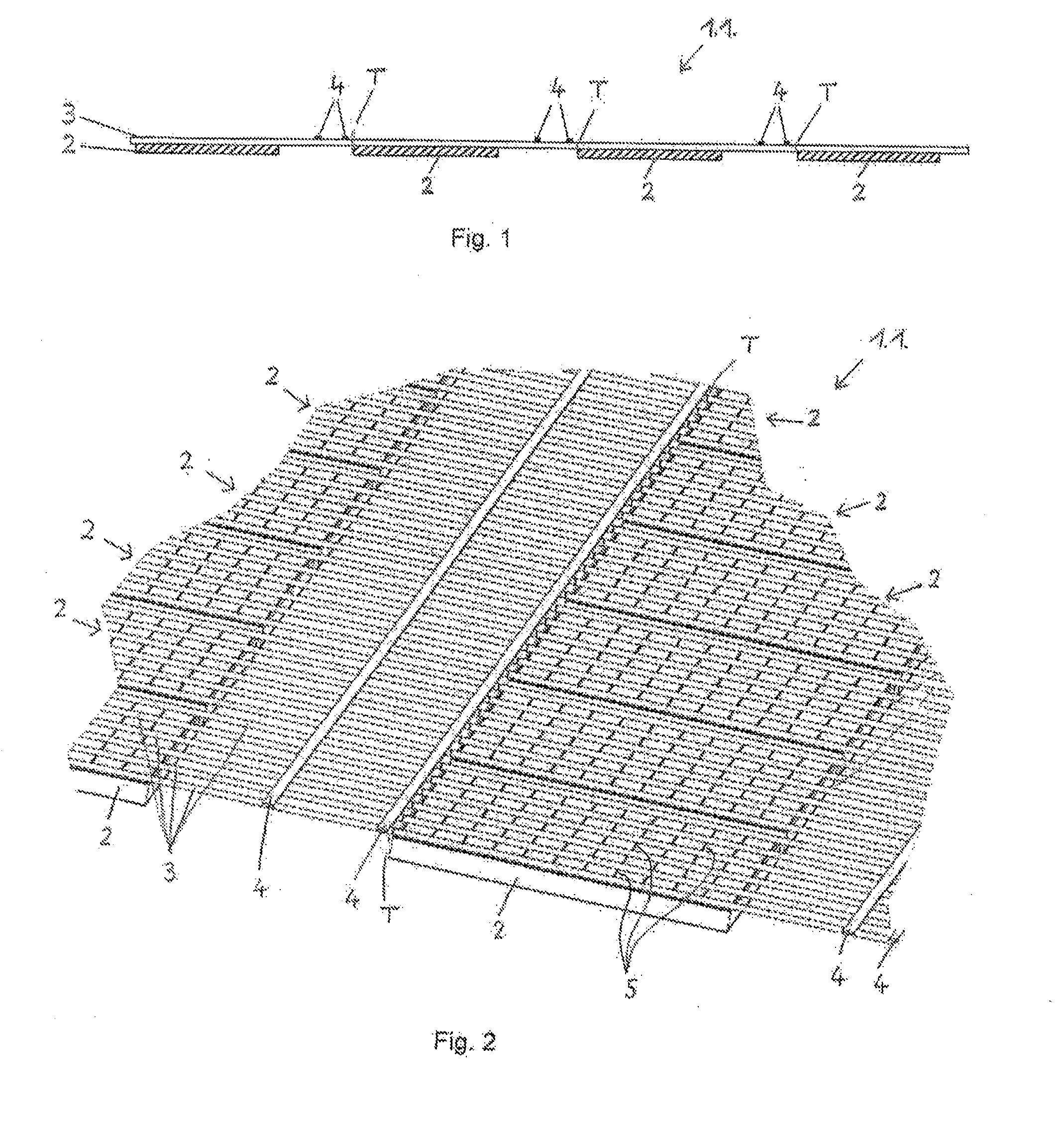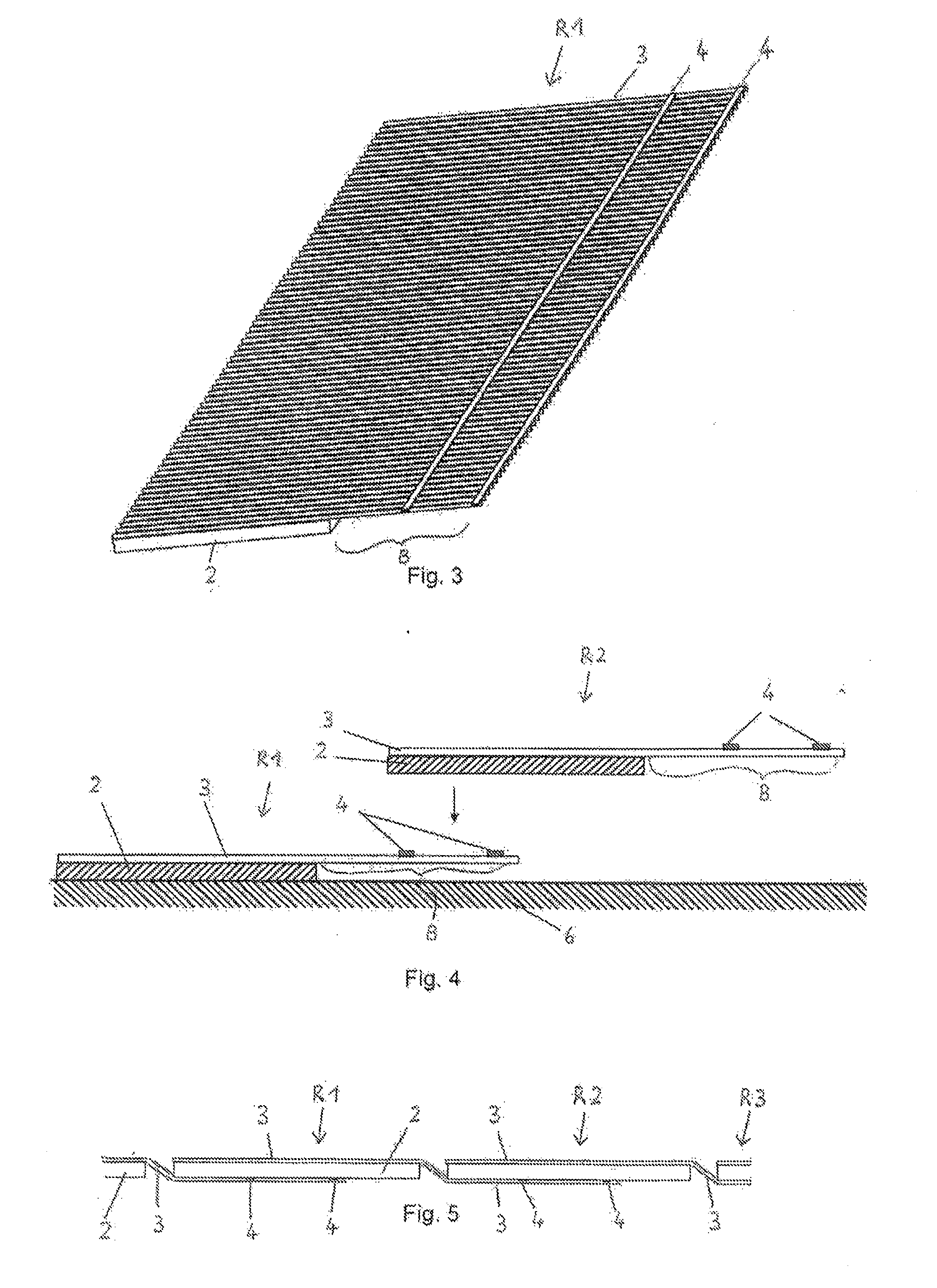Solar Cell Combination
a solar cell and combination technology, applied in photovoltaic energy generation, photovoltaics, electrical equipment, etc., can solve the problems of increased line resistance of contact structures, further shading on the front side surface, and reducing efficiency, so as to achieve the effect of improving efficiency and minimizing costs
- Summary
- Abstract
- Description
- Claims
- Application Information
AI Technical Summary
Benefits of technology
Problems solved by technology
Method used
Image
Examples
Embodiment Construction
[0103]FIGS. 1 to 6 illustrate the method steps for producing the first variant of a solar cell combination 1 from solar cells 2 by using first wire conductors 3 and further contact elements in the form of cross-connectors 4 running transverse to said first wire conductors.
[0104]FIGS. 1 and 2 illustrate a first production step wherein a multiplicity of solar cells 2 were placed next to each other and one behind the other onto a non-illustrated support. A multiplicity of first continuous wire conductors 3 were positioned over the solar cells 2 in the longitudinal direction, and cross-conductors 4 were placed transverse to and above the first wire conductors 3 and in each case between a row of successively arranged solar cells 2 and also spaced apart from the successively arranged solar cells.
[0105]In the FIGS. 1 and 2, a separating line T is indicated in each case directly before a solar cell 2. FIG. 2 shows that on the surface of the solar cells 2, strip conductors 5 are printed tran...
PUM
 Login to View More
Login to View More Abstract
Description
Claims
Application Information
 Login to View More
Login to View More - R&D
- Intellectual Property
- Life Sciences
- Materials
- Tech Scout
- Unparalleled Data Quality
- Higher Quality Content
- 60% Fewer Hallucinations
Browse by: Latest US Patents, China's latest patents, Technical Efficacy Thesaurus, Application Domain, Technology Topic, Popular Technical Reports.
© 2025 PatSnap. All rights reserved.Legal|Privacy policy|Modern Slavery Act Transparency Statement|Sitemap|About US| Contact US: help@patsnap.com



